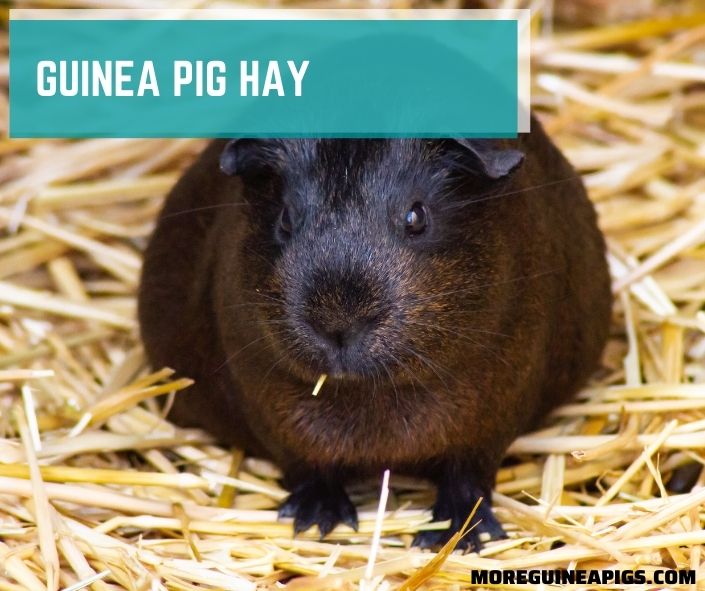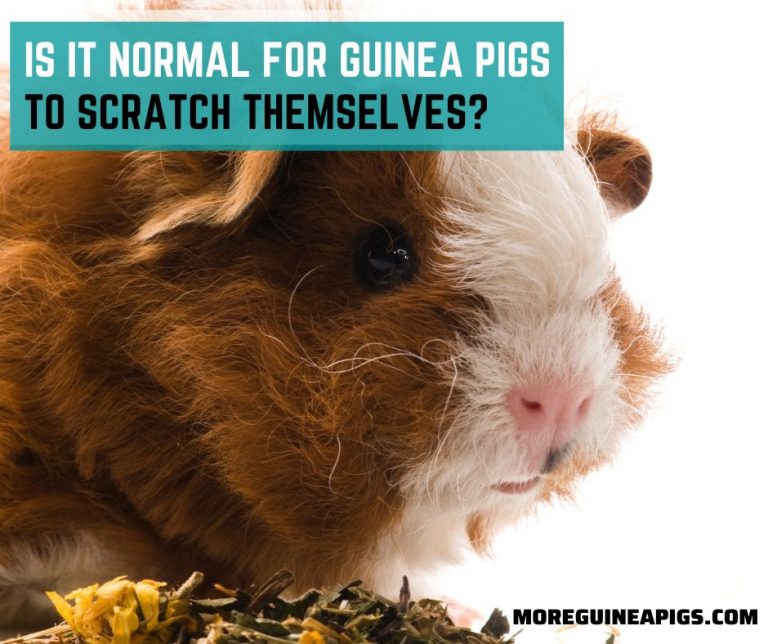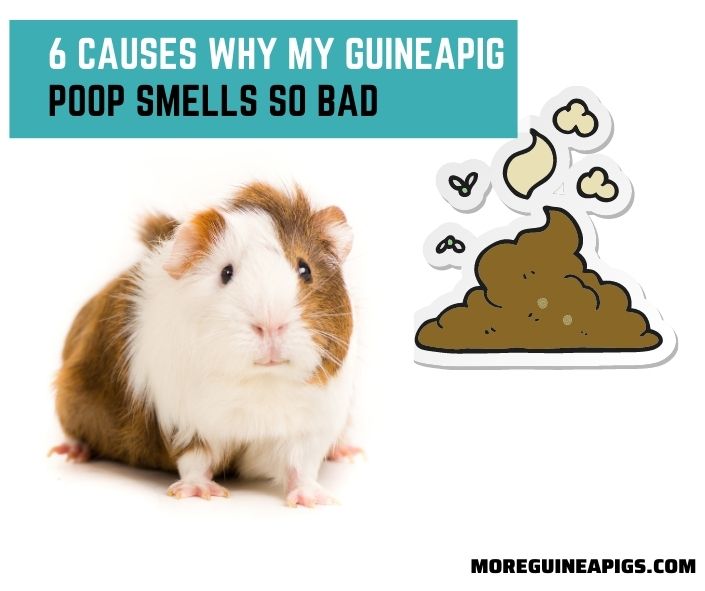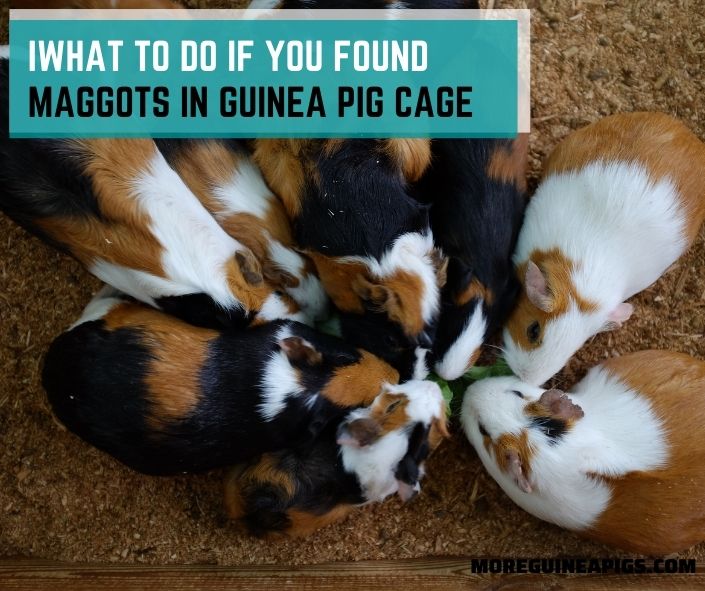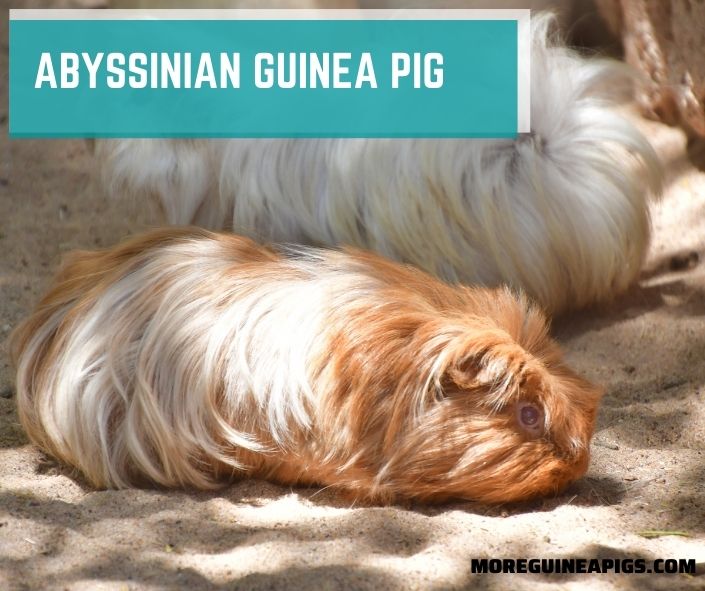Guinea Pig Hay: Everything Need to Know and 4 Top Picks
Guinea pigs need to eat almost 75% to 80% of hay daily. In layman’s terms, each guinea pig should eat a pile of hay as big as its body!
If you are not sure which hay to buy for your guinea pig, then read on! This guide is for you.
Selecting high-quality hay is paramount for your tiny pet’s health.
This guide covers important topics like:
- Can Guinea Pigs Eat Any Type of Hay?
- Which is The Best Hay for Guinea Pigs?
- And more…
Let us dive right into it…
Can Guinea Pigs Eat Any Hay?
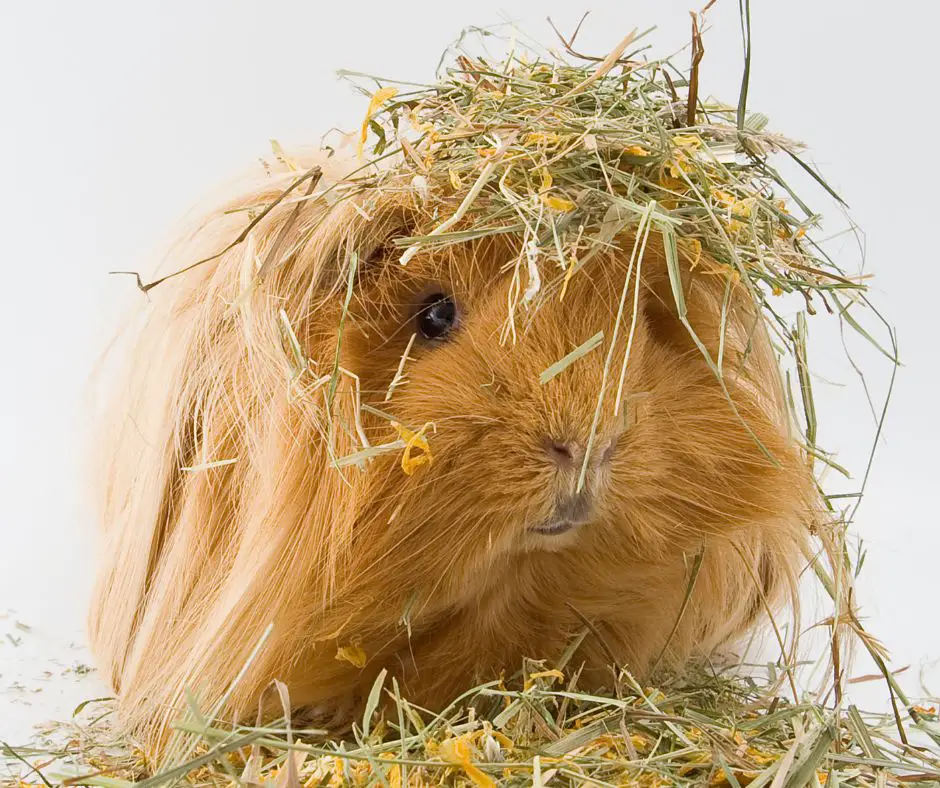
Guinea pigs cannot and should not eat just any type of hay. While Hay is very important for your piggy’s health and well-being, it is vital to choose the right kind to feed it.
There are many different types of hays available in the market so guinea pig owners should know which type to buy.
Not all Hay is Right for Your Pig
Guinea pigs need specific hay types. Legume hay and grass hay are the main types available in the market.
Grass hay is healthier for guinea pigs due to its low protein, calcium, and calorie content. It is also higher in fiber which is beneficial for your pig’s digestive health. Legume hay is higher in calcium which could cause bladder stones in your tiny pig.
Therefore, you must only select grass hay for your pet.
What Kind of Grass Hays Can Guinea Pigs Eat?
The best grass hay varieties suitable for guinea pigs are timothy hay, oat hay, orchard hay, and meadow hay
You can also feed Alfalfa hay but it is higher in calcium. Younger guinea pigs and lactating or pregnant cavies could benefit from the higher calcium content of alfalfa.
However, for adult or older guinea pigs, alfalfa hay could lead to calcium oxalate stones in the bladder or kidneys. Moreover, alfalfa hay could also cause digestive issues such as diarrhea.
So, unless your vet recommends alfalfa hay, please stick to feeding timothy hay, orchard hay, meadow hay, or oat hay to your pet.
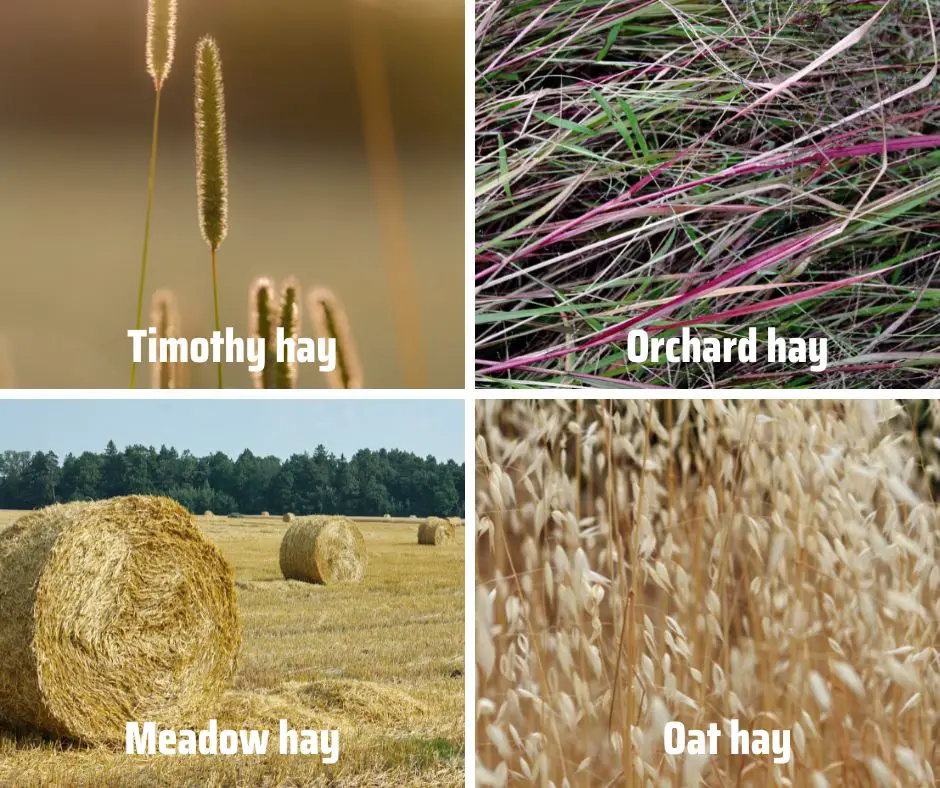
How Much Hay Does a Guinea Pig Eat Per Day?
Guinea pigs need to eat hay daily. As mentioned earlier, each guinea pig needs to eat a pile of hay as big as its body. In ounces, it comes to around 1 ounce or 28 grams of hay daily per pig.
What Percentage of a Guinea Pig’s Diet Is Hay?
Almost 80% of a guinea pig’s daily diet should constitute hay. Piggies need to eat hay all day for roughage. The chewing action helps tone down their sharp teeth to prevent dental abscesses.
How Long Can Guinea Pigs Go Without Hay?
Guinea pigs need to eat hay constantly; so you must keep a steady supply of fresh high-quality hay available for them all day.
Without hay, a guinea pig could die within 36-48 hours.
Hay is very important for fiber and roughage to your pig. These aid in digestion. Also, the constant hay-chewing action helps wear down their continuously-growing sharp teeth. Hay also provides vitamin C which is vital for your piggy’s health.
Eating hay also encourages foraging and grazing behaviors seen in wild guinea pigs. When your pet chews on hay, it can prevent boredom and depression. Eating hay all day is very important for your pet’s physical and mental well-being.
Also read: How Long Can Guinea Pigs Go Without Food?
Can Guinea Pigs Have Only Hay?
In the wild, most guinea pigs only eat hay. However, their natural habitats provide greater varieties of hay which helps meet all their nutritional needs.
In captivity, it is important to provide 20% of vegetables in their daily diet. This will help meet your guinea pig’s Vitamin C requirements. Do provide at least 1 cup of vegetables daily to each guinea pig along with a steady supply of fresh hay.
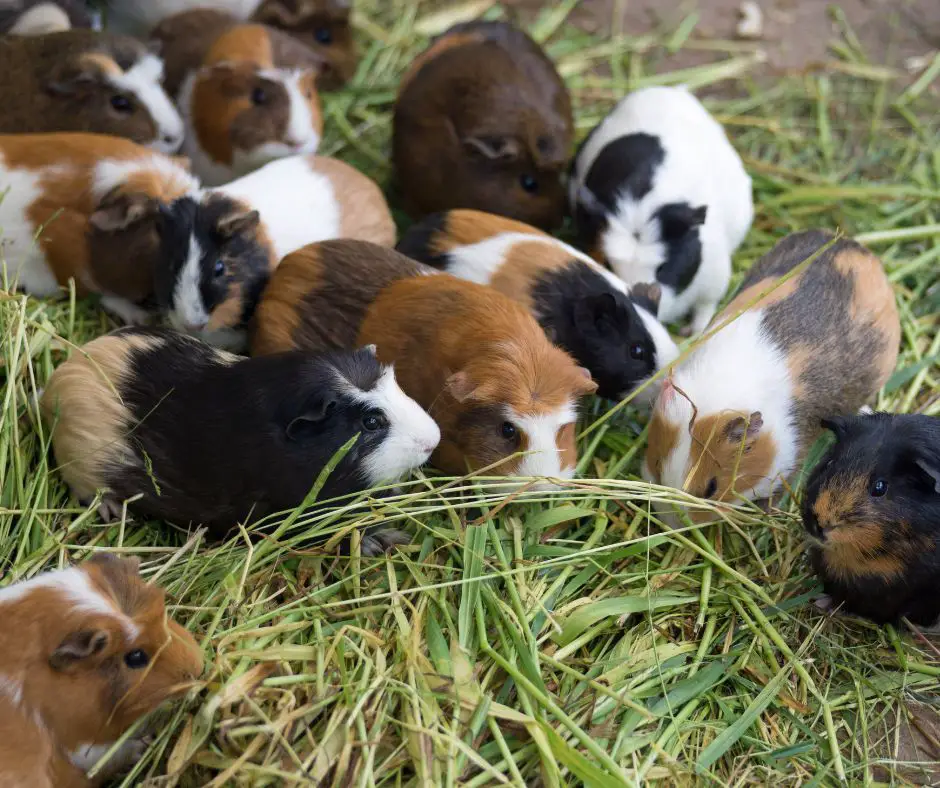
How Long Can Guinea Pigs Go With Only Hay?
Hay is very good for your buddy and it is also the most important part of your pet’s diet. High-quality hay will keep your guinea pig healthy and happy.
However, it also needs around 20-25% vegetables. While your pet won’t die without vegetables, it does need them to prevent scurvy. So make sure you feed both hay and vegetables on a daily basis.
Hay Alternatives for Guinea Pigs
The best hay alternative for guinea pigs is fresh grass. However, you must be very selective in choosing the type of grass you feed it. If in doubt, check with your vet.
If you have a guinea pig that is allergic to hay, then fresh grass is a good alternative. However, make sure to have plenty of grass available for your pet.
Remember, grass does not grow in all environments and it certainly does not grow all year-round.
If you do choose to feed grass to your guinea pig for allergy reasons, then you can grow it in special trays at home. This will ensure a steady supply of grass for your pet. It isn’t hard to do and you can even do without soil.
Also Read:
Buyer’s Guide: How to Choose the Right Hay for Your Guinea Pigs
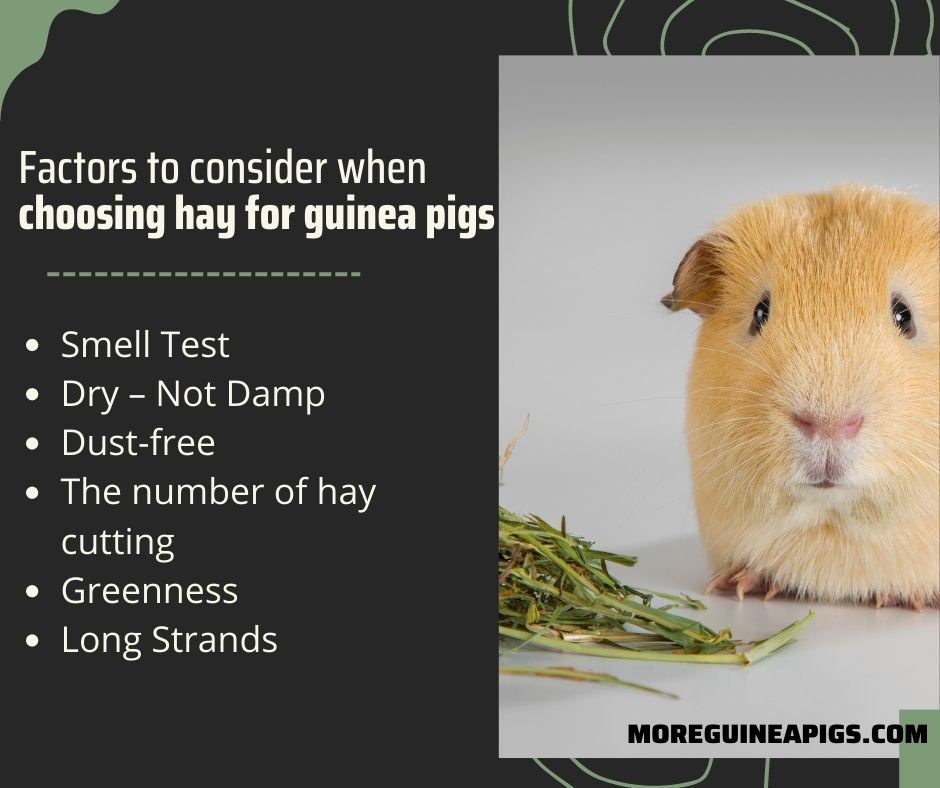
Hay is very important for your guinea pig’s dental and digestive health. It also provides vital nourishment to your piggy without which, it could even die.
Not all hay is the same. Sure, it might have a great texture and sweetness that your piggy will relish. However, that hay may not necessarily provide your guinea pig with all of the vital nutrients.
Some hay types are also higher in calcium which could result in stone formation.
Certain categories of hay are even known to cause digestive upsets in your pigs. That is why pet owners must know how to choose the right hay for their piggies. Here are some factors to consider:
Smell Test
Even if the hay is in a package or a box, you should be able to smell its sweet and fresh aroma. Fresh hay for guinea pigs should have a sweet and natural farm-fresh smell.
You can squeeze the packet and give it a sniff. The hay should smell fresh, clean, and aromatic.
Dry – Not Damp
Damp hay will smell musty and ‘off’. If you feel its texture, it might feel moist. Wet hay is susceptible to mold which can kill your pet.
Dust-free
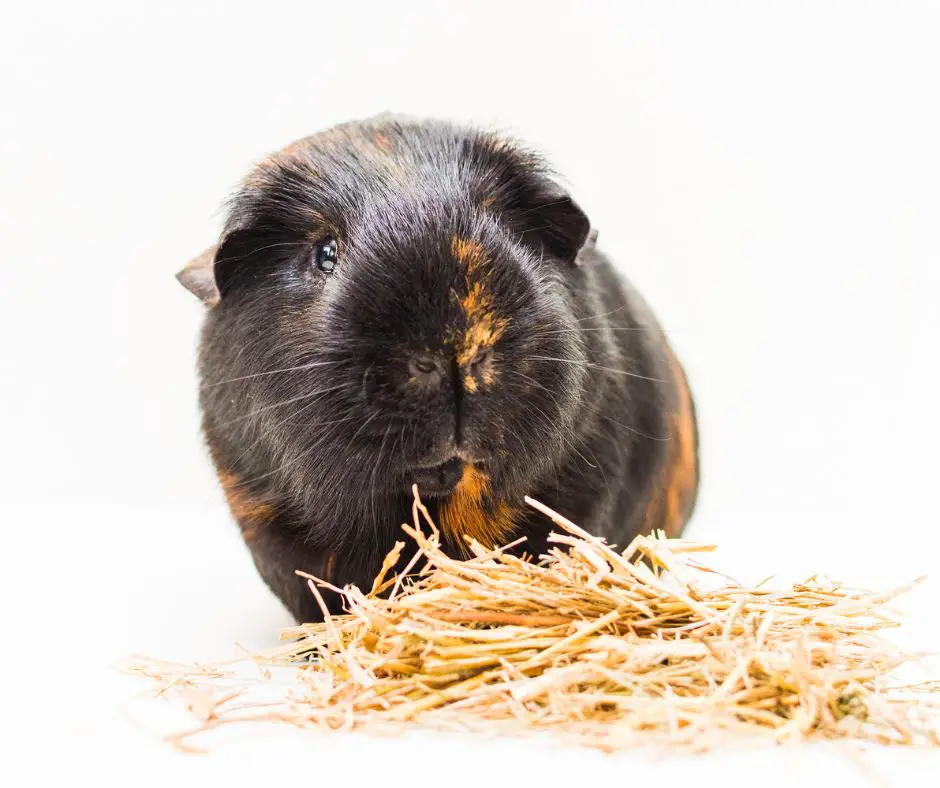
Dusty hay can cause sneezing and other respiratory issues in guinea pigs. We recommend taking the hay out of the box or package and transferring it to a mesh bag. This will get the dust out as much as possible.
High-quality hay from good companies will already be dust extracted which minimizes the powdery content that piggies dislike.
The number of hay cutting
The 1st cutting of Timothy hay may contain weeds. At the same time, the quality of hay greatly diminishes after the third cutting – so the optimum cutting is the 2nd one.
Certain hays like oat hay need to be cut before the oat develops into seeds. This helps retain the texture and flavor of the strands. In general, most experts recommend a mix of 1st and 2nd cutting of timothy hay for guinea pigs.
Greenness
In addition to a sweet smell, fresh hay will retain its green color. Good hay won’t look old, brown, or yellow. Avoid such old-looking hay as it is devoid of nourishment and your guinea pig will also balk at its taste and texture.
Long Strands
In the wild, your guinea pig will get to munch on longer strands of hay. So, look for hay that has long strands that your pet can spend hours chewing.
4 Best Hay for Guinea Pig
We have hand-picked 4 top-rated hay for your piggies. We have based our choices on their nutrition value, dust content, smell, and length of strands.
| Nutritious | Smell | Dust Extracted | Strands | |
| #1 Kaytee Timothy Hay | Low in protein and calcium but higher in fiber | Fresh and sweet | Yes | Blend of 1st and 2nd cut western Timothy hay |
| #2 Oxbow Natural Orchard Grass Hay | Vet-recommended, high in fiber | Soft texture and sweet flavor | Special de-dusting technique | Grown in USA, hand-sorted, ideal length of strands |
| #3 Oxbow Meadow Hay | Meets specific health needs of small animals | All-natural sweet meadow hay with soft-to-crunchy texture | Special de-dusting technique | Early-cut hay |
| #4 Oxbow Oat Hay | Full of fiber for digestive health | Hearty and crunchy texture | Gently processed and de-dusted to remove finer particles | The company harvests this hay before the oat develops into a seed. This ensures a richer flavor, crunchier, texture, and better nutrition. |
#1. Timothy Hay
Kaytee Timothy hay is America’s number 1 hay brand. It is also recommended by vets for guinea pigs and other small animals.
Kaytee hay is developed especially for guinea pigs, rabbits, and chinchillas without the use of pesticides. It contains a mix of 1st and 2nd cutting of timothy hay which most pets will love.
Overview
- Vet recommended
- America’s popular hay brand
- High fiber, low protein, low calcium content
- Especially developed for small animals without the use of pesticides
- Long strands
- Hand harvested for a proper leaf to stem ratio
Kaytee is a reliable brand of small pet food. They believe in providing high-quality nourishment to small pets and hence use natural growing and harvesting methods with minimum processing.
No wonder even vets recommend this brand of timothy hay to small pet owners.
Kaytee hay is free from GMOs, pesticides, and artificial preservatives. The special hand-harvesting techniques maintain the optimal leaf to stem ratio.
Most guinea pigs love this hay. It is fresh, clean, and green with long strands. There is very little dust in it as the brand ensures de-dusting to prevent respiratory issues in small animals.
Pros and Cons of Kaytee Timothy Hay
| Pros: | Cons: |
| – Minimally processed – Keeps guinea pigs happily chomping away for hours – Nutritious: low in protein, low in calcium but high in fiber – Fresh color and taste – Excellent aroma | – Inconsistent quality, some bags were too dusty and contained wood and sharp sticks |
#2. Orchard Grass Hay
Oxbow has worked with a family of farmers to create this fresh orchardgrass hay for small animals.
This is early cut hay packed with tons of nutrition for your pet. Oxbow also grades, de-dusts, and hand-harvests their hay to ensure premium, high-quality hay for your babies.
Overview
- Grown in optimum climate and minimally processed
- Free from dust due to special, gentle de-dusting
- Extensively quality-tested
- Has a sweet taste and soft texture
- Fresh green color
- Available in three different quantities – 9 to 50 lb.
Oxbow orchard grass hay is ideal for your guinea pig’s dental and digestive health. It is high in fiber while being lower in calcium and protein. Moreover, it is free from binders, fillers, and preservatives. No wonder even vets recommend this premium hay for your small buddies.
Orchard hay is soft and sweet and most guinea pigs loved Oxbow orchard grass’s soft texture – especially the older ones. Its fragrant aroma is sure to stimulate your guinea pig’s appetite and encourage prolonged chewing. This benefits their digestive as well as dental health.
Many owners even use it as a bedding and nesting option.
Pros and Cons of Oxbow Orchard Grass Hay
| Pros: | Cons: |
| – Made in the USA – Recommended by vets for high fiber content – Free from binders and additives – All-natural hay with great flavor and aroma – Keeps the cage clean – Dust-free | – Poor packaging, makes it difficult to remove the hay. The bag is also not resealable. |
#3. Meadow Hay
Oxbow’s organic meadow hay has a semi-sweet and a balanced (not too soft nor too crunchy) texture which many guinea pigs love. It is also certified organic so you know your little pet is getting nothing but the best!
Your guinea pig will also love the variety this hay offers – it contains a mixture of hays grown together and harvested with minimum processing.
Overview
- Fresh and flavorful – Sweet taste with balanced texture
- Certified organic
- Hand-selected and hand-sorted by experts
- Higher in fiber – ideal for digestion
- Vet recommended
Thousands of pet parents trust Oxbow for providing the right nourishment to their little piggies. This offering from Oxbow comes from a family of farmers who hand select and hand harvest hay, especially for your tiny pets.
Oxbow also subjects all their products to stringent quality tests which include safety testing, and organoleptic analysis. This means that your guinea pig is getting nothing but the best!
Pros and Cons of Oxbow Meadow Hay
| Pros: | Cons: |
| – Made in the USA – Fresh and flavorful – Recommended by vets for its high fiber content – Free from binders and additives – All-natural hay with great flavor and aroma – Enhances dental and digestive health | – Some picky guinea pigs refused to eat it. |
#4. Oat Hay
Do your guinea pigs love crunchy hay? Then oat hay is a great option. This Oat Hay from Oxbow is grown especially for small animals like guinea pigs with minimum processing.
The brand takes utmost care to provide gently harvested and carefully packaged oat hay direct from the farm to your pets.
Overview
- Oxbow oat hay has a crunchy texture and savory flavor.
- It is packed with fiber for digestive health
- Does not contain any artificial ingredients or preservatives
- Long and fresh strands
- De-dusted using special techniques
Many guinea pigs love the hearty and savory flavor of Oxbow Oat hay. It also has seed heads and larger stems which help your guinea pigs forage as they would in the wild.
The brand harvests the oats before the seeds develop – this helps retain the fiber and flavor of each strand.
The long and fresh strands are so flavorful and aromatic that you can smell the difference and so will your guinea pig! Moreover, the hay is completely devoid of preservatives so you can rest assured your pet is getting premium nourishment.
Oxbow oat hay also makes a great bedding option for your pet’s cage. It is vet-recommended for digestive and dental health thanks to its high fiber content.
Pros and Cons of Oxbow Oat Hay
| Pros: | Cons: |
| – Premium Oxbow quality hay – Savory flavor and crunchy texture for picky eaters – High in fiber – Long and crunchy strands – Carefully hand-sorted with quality testing – Low dust | – Some guinea pigs eat only 30-40% of it and leave the hard stalks and sharp pieces. |
How to Offer Hay to Guinea Pig
Place large handfuls of hay in your pet’s cage. You can also mix different types of hay together to enrich your buddy’s diet. Try different hay varieties, textures, and flavors until you know what your guinea pigs like.
These days, you get special hay feeders like this one. Simply attach one to your pet’s cage and your guinea pigs will happily feed on hay all day from it. Place the water dish on the other end of the cage – this will encourage your pets to exercise!
Final Recommendations
Hay is the most important constituent of a guinea pig’s diet. Almost 80% of your pet’s diet should be made of hay.
You can choose from Timothy hay, oat hay, meadow hay, or orchard grass hay. We recommend timothy hay from Kaytee as it is higher in fiber but lower in calcium and protein.
It contains a blend of 1st and 2nd cutting of timothy hay which helps retain its great flavor, nutrients, aroma, and texture. Your pig will surely enjoy it!
Do check out our other recommendations as well.
